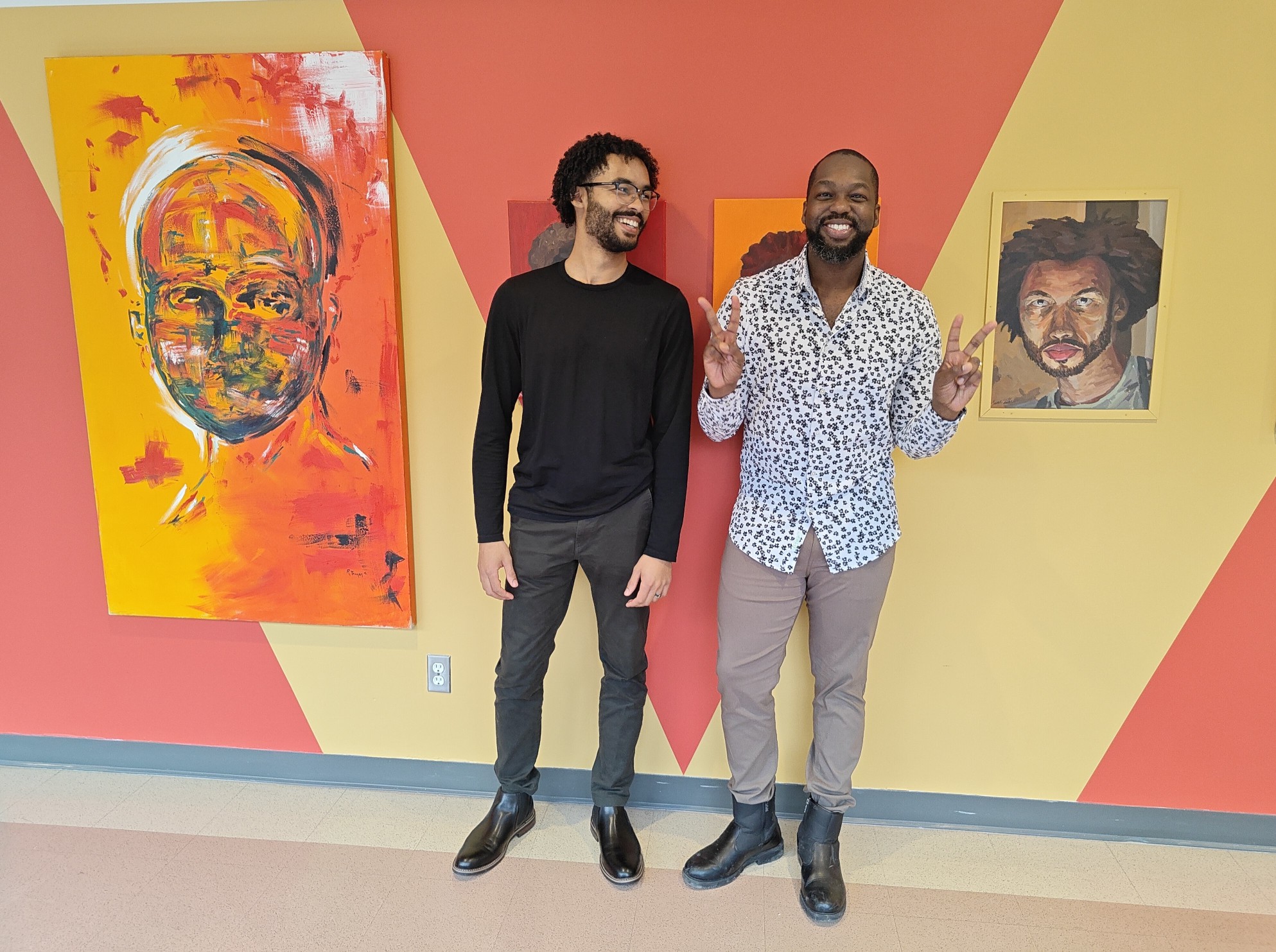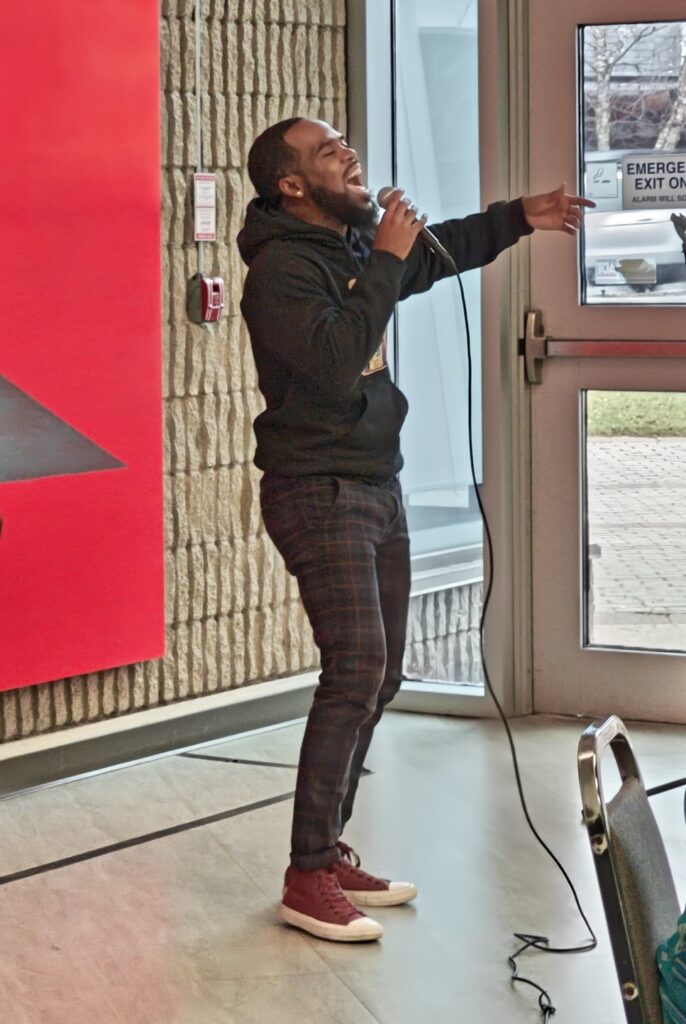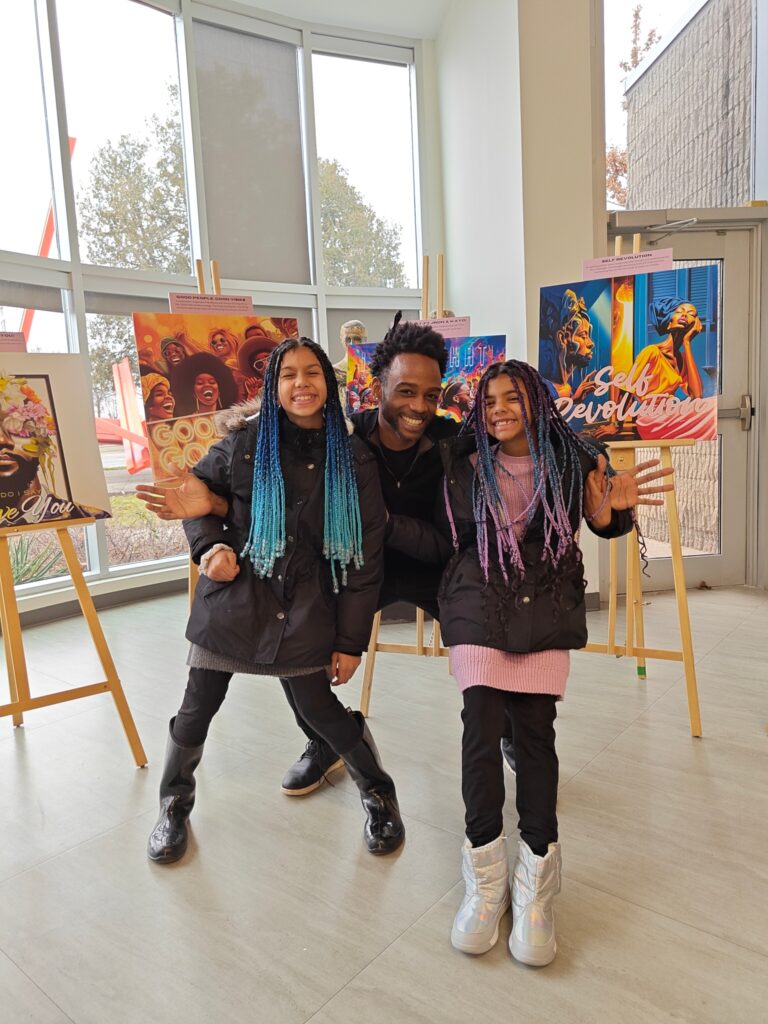By Maisha Hasan, Local Journalism Initiative Reporter
One phrase echoes throughout cookouts, beaches, art galleries, and board meetings alike: bring a folding chair. The chant finding purchase on the latter two may confuse you, but it is the rallying cry of Halton Black Voices (HBV) — even in places where Black people are not invited, HBV has pulled up their folding chairs to these meetings, making sure Black people are represented and their voices heard.
At the Art Gallery of Burlington on January 6, a plethora of folding chairs were brought — metaphorically, of course. Halton Black Voices hosted a celebration to close their “Bring a Folding Chair” exhibit, uplifting Black artists and Halton’s Black community in an event titled “Art + Soul.” The event was packed and bustling, with waiters shifting through narrow lanes, offering mouthwatering Caribbean food on their trays, and artists, creatives, and community members alike enjoying the collective embrace of the music, food, and art on display.
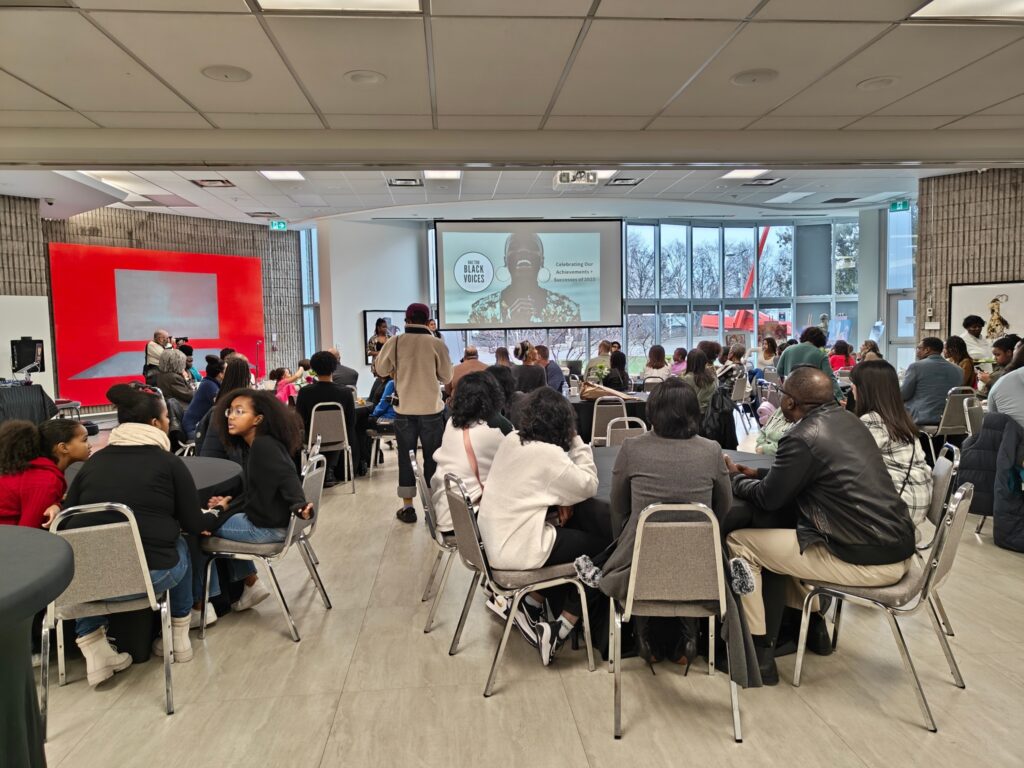
Xavier Fuller is one of the artists in the lineup of local Black artists whose paintings were exhibited. Fuller is not a full-time artist — he is currently focusing on his studies at Sheridan College, in visual arts and industrial design. With these two subjects, he hopes to go into toy design. Fuller sees school as a way to better his skill set and shape his career as a toy designer.
As a kid, when people asked him what he wanted to do when he grew up, he would always say Lego design — but he meant designing the actual bricks, not bringing to life the structures or characters to be made out of Lego. After discovering that he had a learning disability, he went back to more creative pursuits, including art.
“I love making storytelling come to life — the way I think about art and design is communicating more through touch,” is what Fuller says about the three-dimensionality of toys. In his view, the way kids play with toys becomes a story, which may be different than the manufacturers intended, but adds to the overall story of that object.
At age 19, after high school, Fuller discovered he had autism, shedding a new light on why he felt different from others and how he interpreted verbal and social cues. After he found out about his autism, he forced himself to step outside his comfort zone: he got a job at Starbucks. That customer service experience helped him learn to communicate better, and better understand how others communicate. Even if he misses some verbal cues now, Fuller says he notices and interprets non-verbal communication, which helps him socially.
As an artist, he says, “I find that my work naturally falls into the uncanny valley and surrealism, based on my experiences of things, and from there comes my intuition and experiences. Part of the reception [of his work] can be my interpretation or the viewer’s but neither has to be disregarded, that’s the nice part.”
At the “Bring a Folding Chair” exhibit, Fuller had one self-portrait, while the other was a visual storytelling piece, an experiential piece. For that second piece, he “wanted to make a scene where the viewer comes into the scene.” Surrounded by pairs of legs in a rather spectral light, the object that is the main focus is a found object, artifact-like (it is, in fact, an ocarina, a small wind instrument).
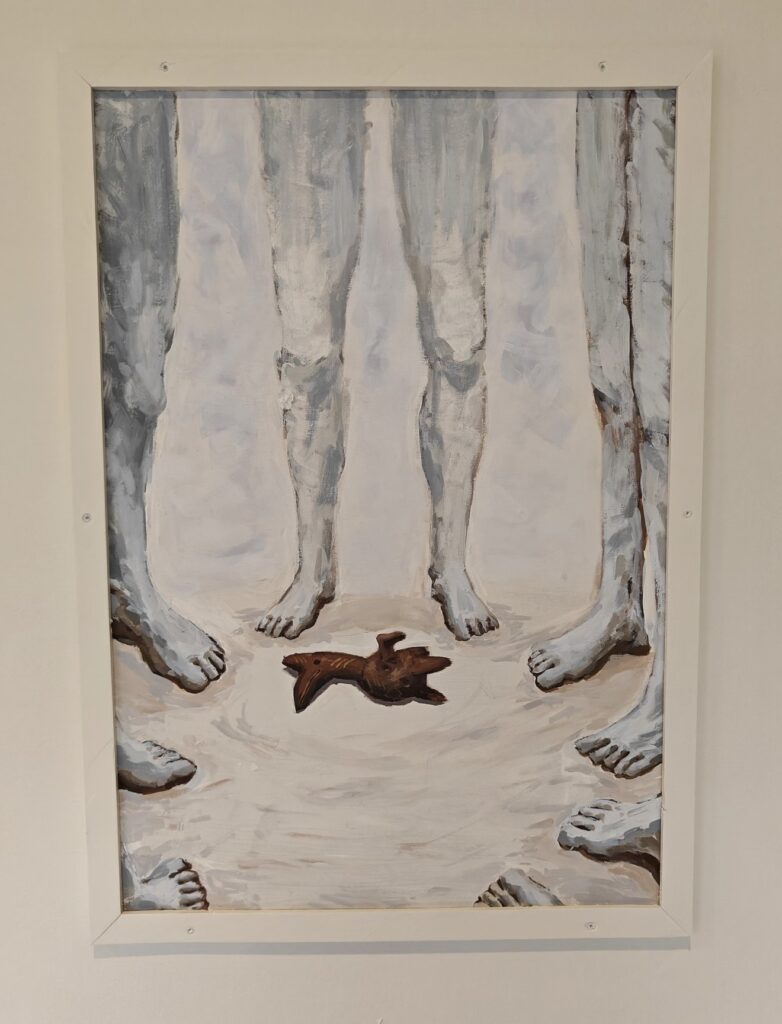
Artifacts naturally have meaning to them, ascribed to them by their makers. We then add meaning to them, intentionally or not, through use or symbolism, so when viewing Fuller’s piece, one can attach any story they’d like — and that doesn’t negate or isn’t better than Fuller’s interpretation, it only adds to it the experience of his work.
Reynold Thomas and Vivianne Pereira, two of the other artists whose work was displayed in the “Bring a Folding Chair” exhibit, were also in attendance, though Kemahee Baker was unable to attend.

The Art + Soul program was first introduced by Jasmine Mander, who serves as a curatorial assistant for the gallery. She spoke about immediately agreeing with Gennile Thomas Smith’s (founder of Halton Black Voice) suggestion for an exhibit featuring local Black artists s– and how “on opening night…[the gallery] was full of Black and brown bodies.” For Mander, it was a proud and emotional moment.
Later, Thomas Smith talked about the impressive work Halton Black Voices has done this year — they have run their Black Student Union; put on the Black Joy Gala; run their Deep Roots basketball program(free drop-in basketball for youth to lower barriers to the sport); implemented healing projects, which involve planting native species in under-resourced neighbourhoods in partnership with Halton Community Housing Corporation; and hosted a cook-out and camp-out. Camping, along with the aforementioned events, are all made accessible and easy for first-timers, ready to build traditions to pass along.
The event ended with an uplifting performance by Gary Beals, a Juno-nominated singer from Cherry Brook, Novia Scotia, who was runner-up on the first season of Canadian Idol in 2003. He even has his own day in his home province, titled “Gary Beals Day” on November 22, if you were looking to add a holiday to your calendar. He performed songs from his discography, particularly his latest album The Melody Within, which was released in October 2023. Among his songs, the most notable was “Good People, Good Vibes,” from the previously-mentioned album, with the audience clapping their hands together and singing in unison. Art was on display by Sean Caesar, who created thirteen artworks, each representing a song from Beals’ latest album.
Art + Soul lived up to its name; it was a celebration of local Black artists and the closing of a successful exhibit, a celebration of all Halton Black Voices achieved in 2023 and all they are ready to do in 2024. That, alongside the food, music, and community spirit, made for an uplifting afternoon for all present.

